OLDEST PAINTINGS IN THE WORLD
- MONA LISA(1503)
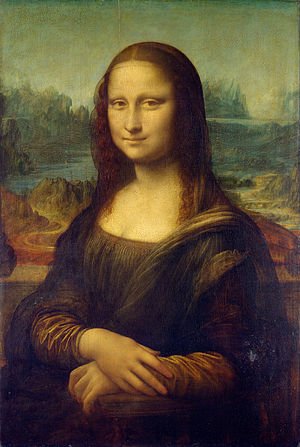
Portrait of Mona Lisa, also known as La Gioconda, the wife of Francesco del Giocondo; This painting is painted as an oil on wood. The original painting size is77 x 53 cm (30 x 20 7/8 in) and is owned by the Government of France and is on the wall in the Louvre in Paris, France.
This figure of a woman, dressed in the Florentine fashion of her day and seated in a visionary, mountainous landscape, is a remarkable instance of Leonardo's sfumato technique of soft, heavily shaded modeling. The Mona Lisa's enigmatic expression, which seems both alluring and aloof, has given the portrait universal fame.
The Mona Lisa's famous smile represents the sitter in the same way that the juniper branches represent Ginevra Benci and the ermine represents Cecilia Gallerani in their portraits, in Washington and Krakow respectively. It is a visual representation of the idea of happiness suggested by the word "Gioconda" in Italian. Leonardo made this notion of happiness the central motif of the portrait: it is this notion which makes the work such an ideal. The nature of the landscape also plays a role. The middle distance, on the same level as the sitter's chest, is in warm colors. Men live in this space: there are a winding road and a bridge. This space represents the transition between the space of the sitter and the far distance, where the landscape becomes a wild and uninhabited space of rocks and water which stretches to the horizon, which Leonardo has cleverly drawn at the level of the sitter's eyes.
The painting was among the first portraits to depict the sitter before an imaginary landscape and Leonardo was one of the first painters to use aerial perspective. The enigmatic woman is portrayed seated in what appears to be an open loggia with dark pillar bases on either side. Behind her, a vast landscape recedes to icy mountains. Winding paths and a distant bridge give only the slightest indications of human presence. The sensuous curves of the woman's hair and clothing, created through sfumato, are echoed in the undulating imaginary valleys and rivers behind her. The blurred outlines, graceful figure, dramatic contrasts of light and dark, and overall feeling of calm are characteristic of da Vinci's style. Due to the expressive synthesis that da Vinci achieved between sitter and landscape, it is arguable whether Mona Lisa should be considered as a traditional portrait, for it represents an ideal rather than a real woman. The sense of overall harmony achieved in the painting especially apparent in the sitter's faint smile reflects the idea of a link connecting humanity and nature.
In the Renaissance which brought together all human activities, art meant science, art meant truth to life: Leonardo da Vinci was a great figure because he embodied the epic Endeavour of Italian art to conquer universal values: he who combined within himself the fluctuating sensitivity of the artist and the deep wisdom of the scientist, he, the poet and the master.
In his Mona Lisa, the individual, a sort of miraculous creation of nature, represents at the same time the species: the portrait goes beyond its social limitations and acquires a universal meaning. Although Leonardo worked on this picture as a scholar and thinker, not only as a painter and poet, the scientific and philosophical aspects of his research inspired no following. But the formal aspect - the new presentation, the nobler attitude and the increased dignity of the model - had a decisive influence over Florentine portraits of the next twenty years, over the classical portrait. With his Mona Lisa, Leonardo created a new formula, at the same time more monumental and more lively, more concrete and yet more poetic than that of his predecessors. Before him, portraits had lacked mystery; artists only represented outward appearances without any soul, or, if they showed the soul, they tried to express it through gestures, symbolic objects or inscriptions. The Mona Lisa alone is a living enigma: the soul is there, but inaccessible
- THE LAST SUPPER(1495-1498)
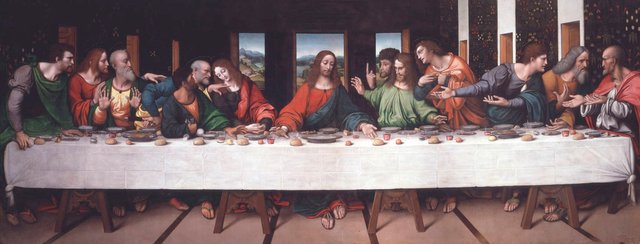
The Last Supper is Leonardo's visual interpretation of an event chronicled in all four of the Gospels (books in the Christian New Testament). The evening before Christ was betrayed by one of his disciples, he gathered them together to eat, tell them he knew what was coming and wash their feet (a gesture symbolizing that all were equal under the eyes of the Lord). As they ate and drank together, Christ gave the disciples explicit instructions on how to eat and drink in the future, in remembrance of him. It was the first celebration of the Eucharist, a ritual still performed.
Specifically, The Last Supper depicts the next few seconds in this story after Christ dropped the bombshell that one disciple would betray him before sunrise, and all twelve have reacted to the news with different degrees of horror, anger, and shock.
Leonardo hadn't worked on such a large painting and had no experience in the standard mural medium of fresco. The painting was made using experimental pigments directly on the dry plaster wall and unlike frescos, where the pigments are mixed with the wet plaster, it has not stood the test of time well. Even before it was finished there were problems with the paint flaking from the wall and Leonardo had to repair it. Over the years it has crumbled, been vandalized bombed and restored. Today we are probably looking at very little of the original.
Much of the recent interest in the painting has centered on the details hidden within the painting, but in directing attention to these 'hidden' details, most people miss the incredible sense of perspective the work displays. The sharp angling of the walls within the picture, which lead back to the seemingly distant back wall of the room and the windows that show the hills and sky beyond. The type of day shown through these windows adds to the feeling of serenity that rests in the center of the piece, around the figure of Christ.
- THE CREATION OF ADAM(1508-1512)
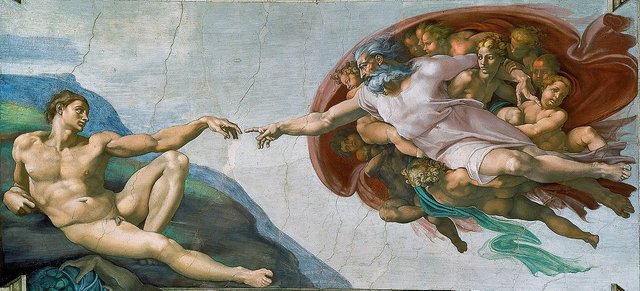
The most famous section of the Sistine Chapel ceiling is Michelangelo’s Creation of Adam. This scene is located next to the Creation of Eve, which is the panel at the center of the room, and the Congregation of the Waters, which is closer to the altar.
The Creation of Adam differs from typical Creation scenes painted up until that time. Here, two figures dominate the scene: God on the right, and Adam on the left. God is shown inside a floating nebulous form made up of drapery and other figures. The form is supported by angels who fly without wings, but whose flight is made clear by the drapery which whips out from underneath them. God is depicted as an elderly, yet muscular, the man with grey hair and a long beard which react to the forward movement of flight. This is a far cry from imperial images of God that had otherwise been created in the West dating back to the time of late antiquity. Rather than wearing royal garments and depicted as an all-powerful ruler, he wears only a light tunic which leaves much of his arms and legs exposed. One might say this is a much more intimate portrait of God because he is shown in a state that is not untouchable and remote from Man, but one which is accessible to him.
Unlike the figure of God, who is outstretched and aloft, Adam is depicted as a lounging figure who rather lackadaisically responds to God’s imminent touch. This touch will not only give life to Adam but will give life to all mankind. It is, therefore, the birth of the human race. Adam’s body forms a concave shape which echoes the form of God’s body, which is in a convex posture inside the nebulous, floating form. This correspondence of one form to the other seems to underscore the larger idea of Man corresponding to God; that is, it seems to reflect the idea that Man has been created in the image and likeness of God – an idea with which Michelangelo had to have been familiar.
One of the questions that have been raised about this scene is the identity of the figures next to God. Given her privileged placement under the arm of God, the female figure is presumably an important one. Traditionally, she has been thought to be Eve, the future wife of Adam, who waits to the side until she is created out of Adam’s rib. More recently, however, a theory has been floated that this is actually the Virgin Mary, who takes this place of honor next to God and the child next to her, who would, therefore, be the Christ Child. This view is supported by the placement of God’s fingers on the child – the same fingers that the priest would use to raise the Eucharist during the Mass. Since Catholic theology holds that the Eucharist is the Body of Christ, this theological understanding would be embodied in this painting. If this latter interpretation is correct, the Creation of Adam would be intrinsically linked to the future coming of Christ, who comes to reconcile man after the sin of Adam.
In all, the painting shows several hallmarks of Michelangelo’s painting style: the lounging position of both Adam and God, the use of bodies which are both muscular and twisting, and the painting of figures who come across as works of sculpture. It is good to remember that Michelangelo was, after all, a sculptor. The painting was not his primary area.
The Creation of Adam is one of the great jewels of Western art, though it and the rest of the Sistine Chapel ceiling suffered the ill effects of centuries of smoke that had caused the ceiling to darken considerably. It was not until 1977 that the cleaning of the ceiling was begun. The result of the cleaning was astonishing after its completion in 1989; what was once dark and drab became vivid. The change from pre-cleaning to post-cleaning was so great that some initially refused to believe that this is the way Michelangelo actually painted. Today, we have a much better understanding of Michelangelo’s palette and the world he painted, beautifully captured across the ceiling of the Sistine Chapel.
- THE STARRY NIGHT(1889)
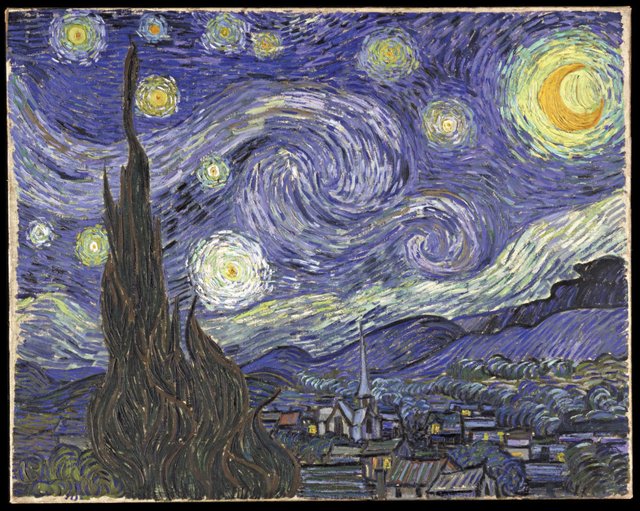
Mention Vincent van Gogh (Dutch, 1853–1890) and one of the first things likely to come to many people’s minds is the fact that he cut off his own ear. This stark act, committed in 1888, marked the beginning of the depression that would plague him until the end of his life. But to know van Gogh is to get past the caricature of the tortured, misunderstood artist and to become acquainted instead with the hardworking, deeply religious, and difficult man. Van Gogh found his place in art and produced emotional, visually arresting paintings over the course of a career that lasted only a decade.
Largely self-taught, van Gogh produced more than 2,000 oil paintings, watercolors, drawings, and sketches, which became in demand only after his death. He also wrote scores of letters, especially to his brother Theo, in which he worked out his thoughts about art. “Always continue walking a lot and loving nature, for that’s the real way to learn to understand art better and better,” he wrote in 1874. “Painters understand nature and love it, and teach us to see.”1
It was nature, and the people living close to it, that first stirred van Gogh’s artistic inclinations. In this, he was not alone. Landscapes remained a popular subject in late-nineteenth-century art. Driven in part by their dissatisfaction with the modern city, many artists sought out places resembling earthly paradises, where they could observe nature firsthand, feeding its psychological and spiritual resonances into their work. Van Gogh was particularly taken with the peasants he saw working the countryside; his early compositions featured portraits of Dutch peasants and rural landscapes, rendered in dark, moody tones.
In 1886, van Gogh moved to Paris, where he encountered the works of the Impressionists and Neo-Impressionists and the Pointillist compositions of Georges Seurat. Inspired by these artists’ harmonious matching of colors, shorter brushstrokes, and liberal use of paint, he brightened his own palette and loosened his brushwork, emphasizing the physical application of paint on the canvas. The style he developed in Paris and carried through to the end of his life became known as Post-Impressionism, a term encompassing works made by artists unified by their interest in expressing their emotional and psychological responses to the world through bold colors and expressive, often symbolic images. In a letter to his sister Willemien, touching upon the mind and temperament of artists, van Gogh once wrote that he was “very sensitive to color and its particular language, its effects of complementaries, contrasts, harmony.”2
By 1888, van Gogh had returned to the French countryside, where he would remain until his death. There, close once again to the peasants who had inspired him early on, he concentrated on painting landscapes, portraits (of himself and others), domestic interiors, and still lifes full of personal symbolism.
5.THE SCREAM(1893-1910)
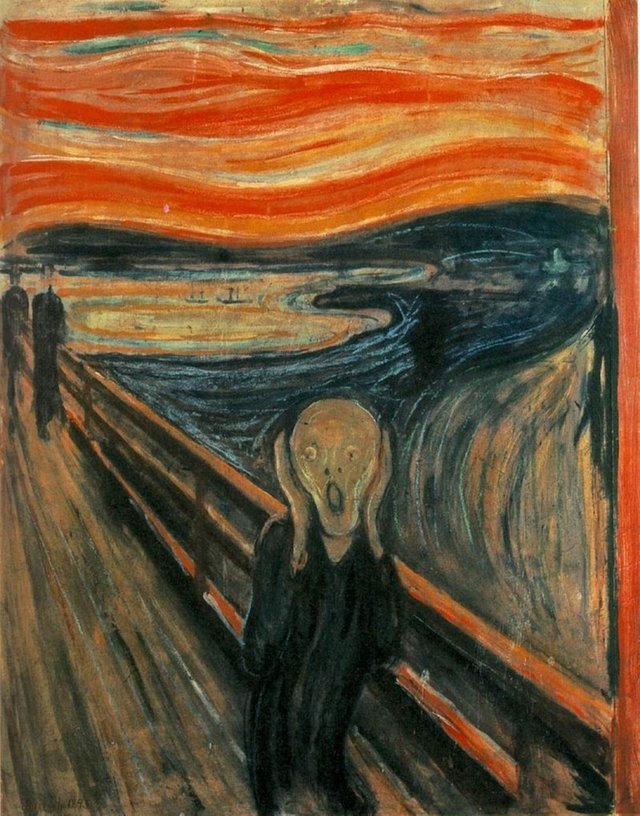
Essentially this famous picture is autobiographical, an expressionistic construction based on Munch's actual experience of a scream piercing through nature while on a walk, after his two companions, seen in the background, had left him. Fitting the fact that the sound must have been heard at a time when his mind was in an abnormal state, Munch renders it in a style which if pushed to extremes can destroy human integrity. As previously noted, the flowing curves of art nouveau represent a subjective linear fusion imposed upon nature, whereby the multiplicity of particulars is unified into a totality of organic suggestion with feminine overtones. But man is part of nature, and absorption into such a totality liquidates the individual. Beginning at this time Munch included art nouveau elements in many pictures but usually only in a limited or modified way. Here, however, in depicting his own morbid experience, he has let go, and allowed the foreground figure to become distorted by the subjectivized flow of nature; the scream could be interpreted as expressing the agony of the obliteration of human personality by this unifying force. Significantly, although it was Munch himself who underwent the experience depicted, the protagonist bears no resemblance to him or anyone else. The creature in the foreground has been depersonalized and crushed into sexlessness or, if anything, stamped with a trace of the femininity of the world that has come close to assimilating it.
Several facts indicate Munch was aware of the danger of an art of this sort for a neurotic humanist like himself. He soon abandoned the style and rarely if ever again subjected a foreground figure to this kind of radical and systematic distortion. At the top of another version of the subject (National Gallery, Oslo) he wrote: 'Can only have been painted by a madman.' He certainly had a horror of insanity, which had afflicted his sister Laura. Within the picture, he has set up a defense, in the form of the plunging perspective of the roadway and its fence, which preserves a rational world of three dimensions, holding at bay the swell of art nouveau curves. Safe in this rational world, the two men in the distance remain unequivocally masculine. In the foreground unified nature has come close to crossing the fence, close enough to distort the form and personality of the protagonist. But the fence still protects it from total absorption into subjective madness.
6.Girl with a Pearl Earring(1665)
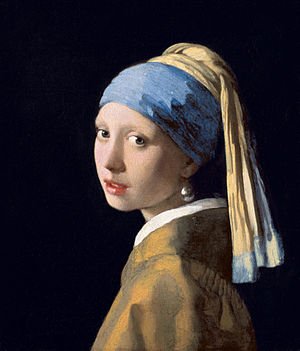
Girl with a Pearl Earring, oil painting on canvas (c. 1665) by Dutch artist Johannes Vermeer, one of his most well-known works. It depicts an imaginary young woman in exotic dress and a very large pearl earring. The work permanently resides in the Mauritshuis museum in the The Hague.
Girl with a Pearl Earring, oil on canvas by Johannes Vermeer, c. 1665; in the Mauritshuis, The Hague.
Girl with a Pearl Earring, oil on canvas by Johannes Vermeer, c. …
Ian Dagnall/Alamy
An observant and deliberate painter, Vermeer produced only 36 known works in his lifetime, while many of his contemporaries completed hundreds. Like his peers, he mostly depicted scenes of ordinary life, later called “genre” painting, often of women at daily tasks. Notable examples include Girl Reading a Letter at an Open Window (c. 1657) and The Music Lesson (c. 1665). He occasionally signed his paintings. While Girl with a Pearl Earring bears “IVMeer,” it is undated. Historians believe Vermeer painted the small piece (17.52 × 15.35 inches [44.5 × 39 cm]) around 1665, during the period in which he executed a group of paintings with a shared pearl motif.
Girl with a Pearl Earring represents a young woman in a dark shallow space, an intimate setting that draws the viewer’s attention exclusively on her. She wears a blue and gold turban, the titular pearl earring, and a gold jacket with a visible white collar beneath. Unlike many of Vermeer’s subjects, she is not concentrating on a daily chore and unaware of her viewer. Instead, caught in a fleeting moment, she turns her head over her shoulder, meeting the viewer’s gaze with her eyes wide and lips parted as if about to speak. Her enigmatic expression coupled with the mystery of her identity has led some to compare her to the equivocal subject in Leonardo da Vinci’s Mona Lisa (c. 1503–19). Unlike the Mona Lisa, however, Girl with a Pearl Earring is not a portrait but a tronie, a Dutch term for a character or type of person. A young woman might have sat for Vermeer, but the painting is not meant to portray her or any specific individual in the same way that Leonardo’s piece portrayed an existing person (likely Lisa Gherardini, the wife of a Florentine merchant). Vermeer’s subject is a generic young woman in the exotic dress, a study in facial expression and costume. The work attests to Vermeer’s technical expertise and interest in representing light. The soft modeling of the subject’s face reveals his mastery of using light rather than line to create a form, while the reflection on her lips and on the earring show his concern for representing the effect of light on different surfaces.
Although now a highly regarded artist, Vermeer was not well known outside of his native city of Delft during his lifetime or in the decades after. Historians credit the 19th-century French critic Étienne-Joseph-Théophile-Thoré (under the pseudonym of William Bürger) for reassessing the artist’s work, which eventually led to Vermeer’s distinguished reputation. Even so, Girl with a Pearl Earring only became one of Vermeer’s more famous pieces around the turn of the 21st century, with the 1995 blockbuster exhibition at the National Gallery of Art in Washington, D.C., and the publication of the best-selling novel Girl with a Pearl Earring by Tracy Chevalier in 1999. The book fashioned the painting’s subject into a housemaid named Griet who works in Vermeer’s home and becomes his paint mixer. It was adapted into an Oscar-nominated film in 2003 starring Scarlett Johansson as the fictional Griet and Colin Firth as Vermeer.
As the Mauritshuis building underwent renovation in 2012, Girl with the Pearl Earring traveled to Japan, Italy, and the United States. It drew crowds in each location, attesting to its now firm place in audience regard. When Girl returned to the Netherlands in 2014, the Mauritshuis announced it would no longer lend out the painting, assuring visitors that the museum’s main attraction would always be on view in its home.
7.The Night Watch(1642)
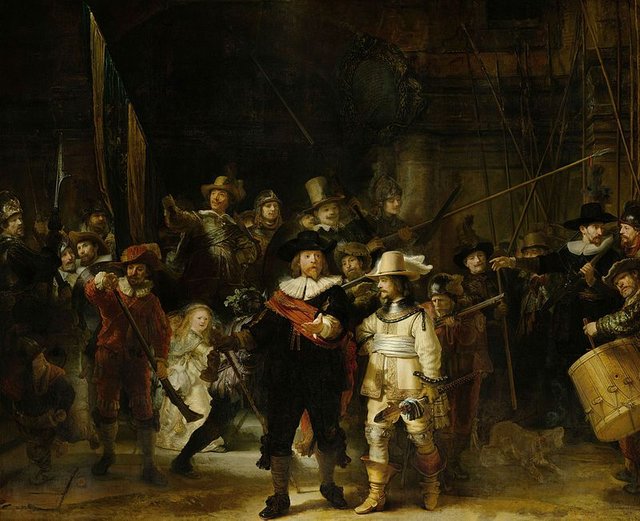
The Painting
So famous a picture, which in the past has been almost as much abused as praised, has not surprisingly triggered an immense amount of analysis, only some of which can be discussed here. Known for its colossal size (roughly 12 feet x 14 feet), the canvas - when compared to earlier copies, like the version (c.1650) by Gerrit Lundens, now in the National Gallery, London - has obviously been trimmed, probably when it was moved to the Town Hall in 1715. About 60 cm, incorporating two background figures and a baby, have been removed from the left side, and lesser amounts from the other three sides. This unbalances the composition (the arch in the background was original nearer the center) and compresses the figures into too confined a space. In all twenty-six figures are now fully or partially visible, including three children (or dwarves) and small parts of five more figures can just be discerned in the background. To the right of the arch, there is a shield, added later, bearing the name of eighteen of the persons portrayed. According to two of them, who gave evidence on Rembrandt's behalf during the investigation into his financial affairs in 1658, he was paid a total of 1,600 guilders - the sitters contributed an average of 100 guilders each, the sum varying with their prominence in the picture.
- THE BIRTH OF VENUS(1486)
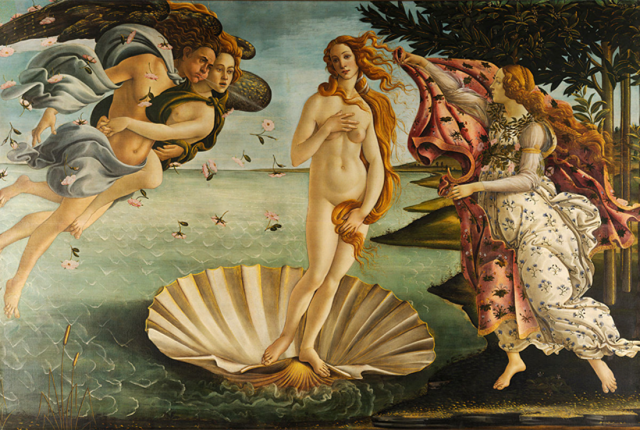
During the 1480s in Florence, it was not uncommon for artists and intellectuals to gather together, typically around a powerful center, such as in the courts of Princes or rich families such as the Medici's. This new vanguard of men made it their mission to recreate the past and relive it through translating and comprehending the works of Virgil, Homer, and Hesiod.
It is said that every day Lorenzo the Great assembled groups of humanists, philosophers, and artists to form a literary society who interpreted works and formed ideas that were then translated by the artists, painters, goldsmiths, and musicians.
The Birth of Venus was a theme launched by Lorenzo and it was he who had it set to verse by one of his favorite humanist poets, Angelo Poliziano. This filtered through to Botticelli and he scrupulously followed the text in order to design the artwork.
Angelo Poliziano's stanzas were based on an ode by Hesiod. In the story, we see the aftermath of Venus's creation, pushed along by the Gods of the winds, Zephyr and Aura, who, on the first day of Creation, elevated this shell bearing Venus' triumphant nudity from the unknown depths of the sea. Approaching the earth over which she will assume her true role, she becomes suddenly modest, and notice the stance, which Botticelli borrowed directly from the beautiful examples of the antique, Venus Pudicae, that were being discovered at that time.
For this modesty to take on its sacred nature, one of the Graces, in the name of all three, is there to cover her with her cape. The Graces have the privilege of covering Venus' nudity and transforming her into the mother and patron saint of all the forces of creation. Venus is in the process of landing. It should be pointed out that the shore she is landing on is very rugged and already has tall trees, both Laurel, and myrtle, and that the trees are crowded together, their foliage obscuring one another.
There are several details that illustrate Venus' triumphant magnificence. Art historians know that until recently, this Birth of Venus had been lavishly covered with varnish, which means that the successive coats of varnish had completely opacified. The painting has been superbly cleaned, and today's viewers are able to discover a new Botticelli with pearly flesh, nearly translucent skin and the eerily green-blue of the ocean
- School of Athens(1509-1511)
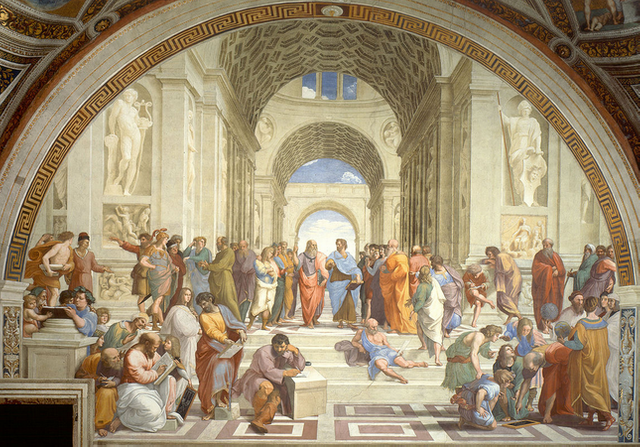
Raphael's School of Athens was not meant as any type of school that actually existed (i. e. Plato's Academy) but an ideal community of intellects from the entire classical world. To facilitate this vision, Raphael created a spacious hall that recalls the "temples raised by the philosophy" written by the Roman poet Lucretius.
The School of Athens demonstrates, like classical statues or clear and distinct ideas, idealized portraits of Raphael's contemporaries representing the major figures of classical wisdom and science. Taken further, Raphael painted on the Vatican Palace's walls his vision of the world of Humanist thought.
In the center of the artwork, Plato and Aristotle are discussing the respective merits of Idealism vs. Realism. Plato holds his book, Timaeus, one of the few works by Plato that had been recovered by the Renaissance while explaining how the universe was created by the demiurge from perfect mathematical models, forms, and the regular geometric solids. With his right hand, Plato gestures upwards, indicating that the eternal forms, such as the ideals of Beauty, Goodness, and Truth, are not in or of this world, but beyond, in a timeless realm of pure Ideas.
In argument, Aristotle points with his right hand straight ahead out into the solid world of material reality, into the world of physical science and practical reason. In his left hand, Aristotle holds his Ethics.
It was part of the Renaissance's mystique that immortality in this world could be achieved through the reincarnation of some immortal deity or hero from the past. Therefore it can be seen as Raphael's great tribute that he included Michelangelo and his contemporaries in the artwork in the shape of great philosophers and scientists.
On either side of Plato or Aristotle are the main thinkers of the classical world. The philosophers, poets and abstract thinkers are allied on Plato's side. The physical scientists and more empirical thinkers are on the side of Aristotle. Only a few of the ancient thinkers in School of Athens can be identified definitely.
One of whom is one of Plato's masters, the Greek mathematician Pythagoras. Here he is demonstrating, his theory that ultimate reality consists of numbers and harmonic ratios.
The scholar in the white turban and green robe who leans over Pythagoras is the Arabic philosopher Averroes. Averroes is responsible for transmitting the philosophies of Plato and Aristotle to the West.
In the right foreground are concentrated, two groups. An absorbed group of students huddles around the leaning figure of Euclid (who may be Archimedes), demonstrating some geometric proposition with a pair of compasses upon a slate. Behind him, in yellow robes, stands the Greek astronomer and geographer Ptolemy, holding his globe of the earth. Behind him is the Persian astronomer and philosopher Zoroaster, holding a sphere of the fixed stars. Just to the right of these two is Raphael himself, the only figure in the School of Athens who gazes directly back at the viewer.
Sprawled in solitude on the steps before Aristotle is the Cynic philosopher Diogenes, and the brooding figure on Plato's side is supposed to be Heraclitus ("no man can step into the same stream twice"), the pre-Socratic philosopher whose enigmatic observations fit into no clear category.
Other contemporaries of Raphael seem to have been singled out for glorification. Standing next to Raphael on the extreme right is his friend the painter Sodoma. In fact, it was Sodoma's own frescoes that Pope Julius ordered Raphael to destroy for his own. The model for Zoroaster is said to be the humanist scholar Pietro Bembo, possibly a source of many of Raphael's ideas.
The architect Bramante is portrayed as Euclid (or Archimedes). Bramante was a mentor of sorts and it was probably from him that Raphael got most of the geometry and architectural composition for his painting, as well as many of the philosophical ideas in it.
Leonardo da Vinci's portrait is also self-evident in the School of Athens. His reincarnation as Plato is somewhat curious though, given that Leonardo left Florence, and its overt Platonism, for the more congenial Aristotelian circle of scholars, scientists, and engineers at Milan. Perhaps it was Raphael's duel admiration and preference for Plato, combined with his respect for his teacher (Leonardo) that led him to identify the two men.
10.Whistler’s Mother(1871)
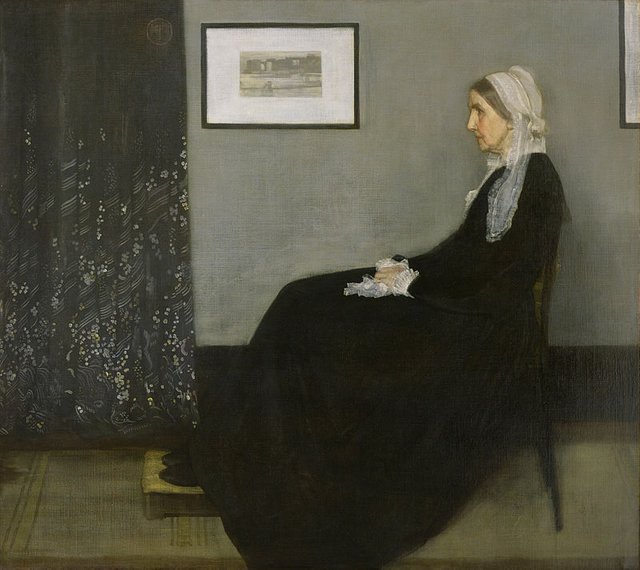
This iconic painting tours different cities worldwide and it is known to be one of the famous artworks in existence. The oil painting Whistler’s Mother, by James McNeill Whistler, is also known as Arrangement in Grey and Black: The Artist’s Mother. This oil on canvas piece is currently owned by Musée d’Orsay in Paris. Until this very day, people are still in awe whenever this painting graces their country’s museum and it has brought a whole new perspective to what art meant for the artist. This beautiful painting measures 56.8 inches by 63.9 inches and is dedicated to Whistler’s mother.
James McNeill
James McNeill Whistler was an American artist who was born on July 10, 1834, in Lowell, Massachusetts. He was able to create his first art piece titled, Symphony in White, No. 1: The White Girl, in 1861 at the age of 27. He made this piece after he came back from Paris where he studied traditional art methods in Ecole Impériale. Whistler had many influences for his artworks, which can be seen through the different methods he used in his pieces. One of these influences was Charles Baudelaire, who shared his opinion about “modern” art. He inspired McNeill to look at life’s brutality to be able to portray it faithfully and give it greater meaning.
The Model in Whistler’s Mother
This artwork is a portrait of James McNeill Whistler’s mother, Anna McNeill Whistler while they were in London in 1871. It was said that James’ model was not able to commit to the job and it was during this time that James decided to do his mother’s portrait. There was a lot of experimentation before the creation of this famous painting. James Whistler wanted his mother to pose for him while standing up but it proved to be too tiresome for her.
It was in this painting that Whistler was able to express his style in tonal composition and harmony. At first glance, the painting appears simple. However, upon closer inspection, the artwork indeed portrays a balance between the different shapes in the picture. Whistler was able to achieve harmony in the composition of this artwork. He was able to use the right rectangular shape for the picture on the wall, the floor and on the curtains. The result of this was a better and stable view of his mother’s face, dress, and chair.
The World’s View On This Famous Painting
This painting received mixed reactions from different art critics during its time. It was said that the colors and pose of Whistler’s mother was a symbolism of “a grave sentiment of mourning”. This critique may have come from the dark colors that the artist used to create the piece. Others view this amazing work of art as a perfect symbolism of motherhood. No matter how many times this painting is viewed, you can be sure that it depicts a different emotion each time. Today, Whistler’s Mother has proved to be one of the most famous paintings in history.
Congratulations @vamshikiran! You have received a personal award!
Click on the badge to view your Board of Honor.
Do not miss the last post from @steemitboard:
Congratulations @vamshikiran! You received a personal award!
You can view your badges on your Steem Board and compare to others on the Steem Ranking
Do not miss the last post from @steemitboard:
Vote for @Steemitboard as a witness to get one more award and increased upvotes!